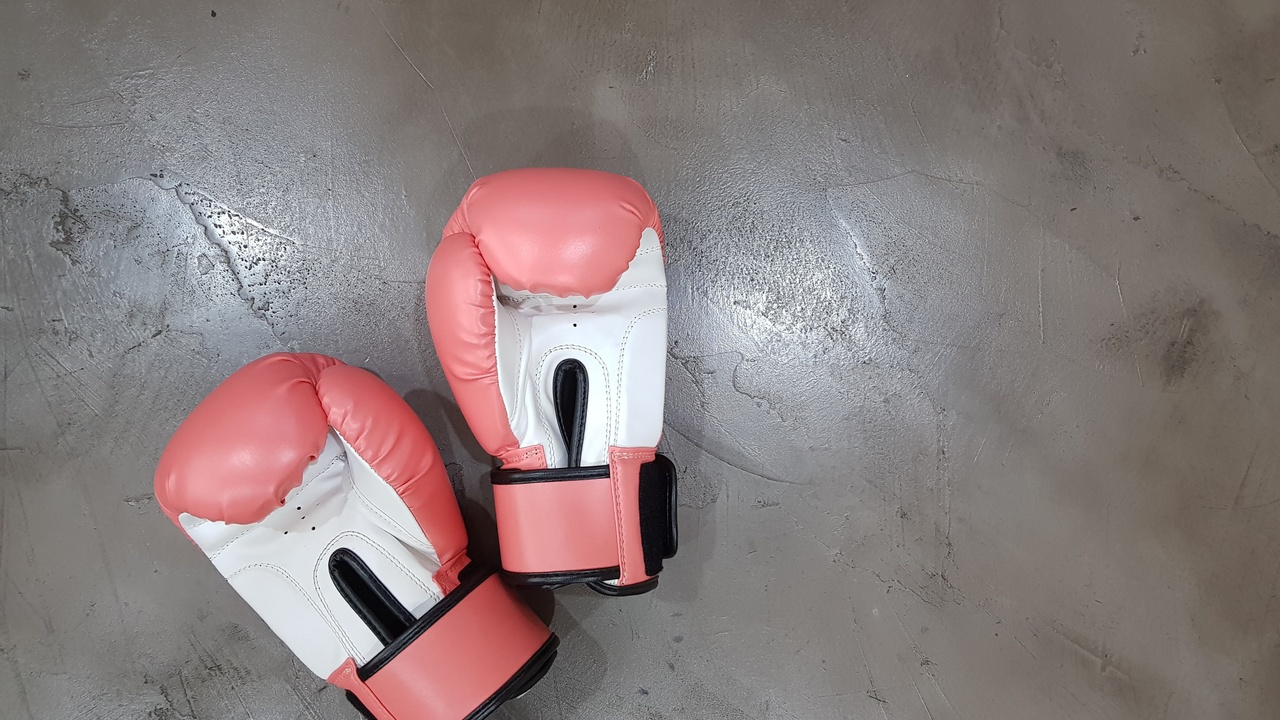The Silent Debate: getting quiet as a strategy for speaking up

Teaching argument in the high school classroom is pretty much a ‘must,’ right?
Somewhere between core learning standards in academics and an increasing need for critical thinking and problem-solving in the real world, the-art-of-argumentation-as-unit continues to gain its momentum (and rightfully so!)
In my own classroom, just before my students launch into arguments of their own, I take the opportunity to first explore some of the greatest debates of all time.
We peer into those monumental court cases, from Brown v. Board of Education (1954) to Texas v. Johnson (1989), but we also highlight those issues so near and dear to students’ interests, such as New Jersey v. T.L.O. (1985) and Board of Education v. Earls (2002).
If there’s a Constitutional right my students most fervently have something to speak up about, though...it’s Amendment 1 (see how I did that?!).
Cases like Tinker v. Des Moines (1969), Hazelwood v. Kuhlmeier (1988), Riley v. California (2014), and...
What it means to 'make' writing + 3 strategies for getting started

As a writing teacher, I'm sure your students write a lot, right? But how often do you give them time to 'make' their writing?
How often do you let them get lost in the 'parts' of writing instead of merely plugging out draft after draft?
How often do you let them create?
In this Facebook Live video, I offer some fresh perspective on teaching writing in the high school classroom, and I offer three ways to 'make' writing as a means for getting started.
Check it out, and leave a comment below!
I look forward to turning this into a blog post soon, but I want to give credit now to the 'make' expert herself, Angela Stockman, who inspired my direction with this 'vlog' post!
Now get making!

PS...Some of the book links in my posts are affiliate links, which means I can make a small commission from them. There is *zero*, additional cost to you, of course. Consider it my ‘tip jar’ for spittin’ all this free wisdom at you ;-) In all realness, just k...
What I Do Matters: using photo essays to teach arguments

According to Holly Clark and Tanya Avrith, who offer up 10 characteristics of today's learners in their text, The Google-Infused Classroom, it's pretty standard practice for our students to speak in images these days. From emojis as a frequent replacement for text, to snapshots and video 'stories', images are the Gold standard for teen communication in the digital era.
So...
Teens like images.
Photo Essays use images.
Therefore, teens must like Photo Essays!
Yes, indeed...the Photo Essay is a great way to teach students the foundational concepts of writing without actually writing!
#gradinghack
But whoa, now...hold on! I'm certainly not suggesting students avert the written word altogether...that's just plain silly (and sooo anti-ELA of me!).
However, when we throw students straight into the writing process (AKA the ever-famous 'writing diagnostic') to see how they float, a steady stream of moans, groans, and lingering resentment for the writing proces...
Truth or Triumph: why the classic 'debate' activity deserves an update

Just as you can count on fireworks on the 4th of July or leftovers on Boxing Day, you can expect a good ol' fashioned debate in the high school classroom.
Whether it take the form of a single-day activity or a weeks-long research project, many of us rely on the classic 'Debate' activity as a means for scaffolding the writing process, teaching students about the importance of research, and helping them hone the craft of public speaking.
But perhaps one of the best things about running a debate is the engagement it inspires. Suddenly, students who've never said *boo* during class discussion are on their feet, arms flailing, pens scribbling, whispering feverishly with their partners as they hastily prepare what they're going to say on behalf of the team.
And much of this magical behavior has to do with the interest teens take in winning. They enjoy a challenge, and they're motivated to be on-point as a reflection of their own, personal best.
What's more (they don't even ...
The Brainstorm Artist: Color Carousel Brainstorming
The following is part of the 'Remix Archives', a catalogue of articles I'm 'recalling to life' from my days of blogging over at the Global Pen (circa 2012!). Specifically, this archive involves those posts my audience has known and loved over the many years we've been colleagues and friends, so consider these ones 'back by popular demand'! Enjoy!
The original version of this post was published on: April 8th, 2015 @ the Global Pen.
Talented writing teacher that you are, you've been hand-picked to host our Global Gallery exhibition! In this post, ideas will be brought to life, arguments will be expressed in-living-color, and the final product will be showcased for all to admire!
That's right, we're mixing the written word with some colorful creativity to make our masterpiece. Our muse? The globally-issues essay prompt. Our canvas? The brainstorm sheet. Our masterpiece? A finely crafted judgment.
Just as any Gallery Owner knows, it's all about how one structures th...
3 Ways to spark conversation in the modern classroom

It’s been roughly 30 years since Stephen Covey wrote The 7 Habits of Highly Effective People, and it’s still, hands down, one of the most relevant reads of our time.
Why? Because it offers gems like this:
Seek first to understand, then to be understood.
Stephen Covey, Habit #5
Amidst the noise of political polarization and the deepening rifts in social, racial, and religious lines, no advice could be more sage or more sound.
In Habit #5 of his best-selling book, Covey points out that we 'have such a tendency to rush in, to fix things up with good advice. But we often fail to take the time to diagnose, to really, deeply understand the problem first.'
In other words, we know how to talk at people, but we aren't always as good at talking with them.
How many times have you found yourself waiting for another person to stop talking so you could start? We listen with an agenda to reply.
As Covey puts it, we're either speaking, or we're getting ready to, but there's little work...
Shift Happens: 4 mindset shifts for teaching in the 21st century

According to Forbes magazine, freelancers are expected to become the workforce majority by 2027, in large part, due to the perks of a digital era.
Things like automation, video conferencing, document sharing, and infinite digital reach are opening doors to freedom, flexibility, and the chance to work from *virtually* anywhere but an office cubicle.
With the growth of freelance apparently dancing triples around the traditional workforce, the 'Gig Economy' is on the rise, with nearly half the Millennial population already on board.
What used to be the 'fallback' for those who lost a job, freelancing is stepping into the limelight as the legit standard in pursuing a professional career.
So...what does this mean for our students?
Well, as an entry point, this means that if they're moving into a world where freelancing is the new cubicle, our students will need to know how to self-direct.
(Long-gone are the days of someone looming over their personal space demandin...
6 Collaborative Brainstorming Strategies for High School Students

Coined in the 1950s and popularized by his 1960s publication, Applied Imagination, advertising executive + businessman Alex Osborn's brainstorming concept has since made its way through the boardroom and into the high school classroom as a standard means for essay preparation.
Prior to drafting the various elements of their essay, we typically encourage students to generate a few ideas and consider strategic order before committing these thoughts to the page or screen.
And we facilitate this process in any number of ways. Lots of times, our writers are asked to draft essays individually and/or on-demand, meaning a time limit is in place.
So we share idea-generating strategies in the form of steps, pneumonic associations, or triggers such as the Hand Approach method. These give writers a framework to access ideas quickly and efficiently within that limited time frame.
Asking our students to brainstorm in groups is also a timeless classic. This is where Osborn's legacy ...
Breaking the ice: an assessment tool + culture creator for the high school classroom

The following is part of the 'Remix Archives' from my days at the Global Pen (circa 2012, friends!). This archive involves those posts my audience has known-n-loved over the many years we've been colleagues and friends, so consider these ones 'back by popular demand'! Enjoy!
The original version of this post was published on: JULY 25th, 2012 @ the Global Pen
Raise a digital hand if you've every subscribed to the maxim that teachers shouldn't crack a smile until December (or October, at least) in an effort to establish authority and coax learning.
I'm literally cringing at the thought. Not because I'm judging you, but because I've actually been guilty of some variation of this 'maxim' during my early years as a teacher.
So if you're raising that digi-hand, I'm (embarrassingly) with ya, pal...
Seriously, I want to know who came up with this nasty, little lie so I can take their teaching certificate and rip it into tiny shreds (Ugh!).
*teacher-blogger laughs in j...
From passion to purpose: getting started with student-led projects

In a recent post, I talked about why our students are learning without us these days, and how it has a lot to do with an imbalanced emphasis of cognitive work over building those tangible (AKA, 'soft') skills which are just as necessary in doing the real work of the world.
Now don't get it twisted here...cognitive work is important.
But even if the emphasis of our instruction is on higher-order thinking skills (HOTS), a lot of the cognitive work students are doing is exclusively carried out in the name of test preparation.
Case in point: consider why we teach students to write an argumentative essay.
First of all, it runs the gamut of HOTS, doesn't it? Among the highlights, they're learning to:
- apply information, by including evidence and examples to back their claims
- analyze information, when they consider the weight and relevance of the evidence they find
- evaluate information, when they draw conclusions and drive home their point or perspective
- express them...



